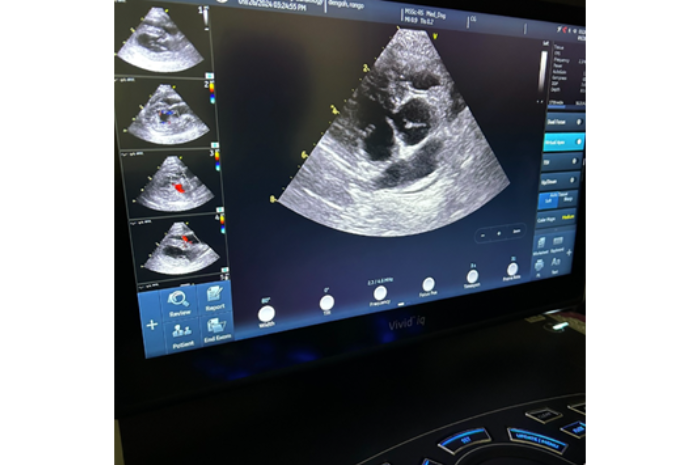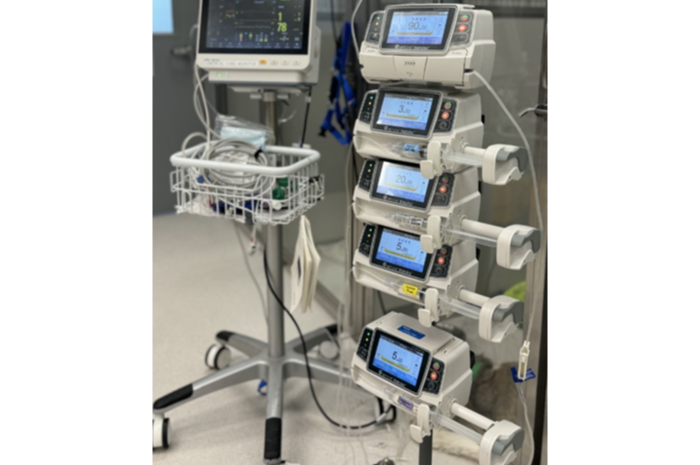Is My Pet Too Old For Anesthesia?
Senior Pet Health

Is My Pet Too Old for Anesthesia?
November is Senior Pet Month, and it’s time to put an age-old question to bed (a soft, cushiony, orthopedic one, of course): Can senior pets be too old for anesthesia?
It’s a fair concern. Many pet owners worry that their dog or cat’s age makes anesthesia unsafe. The truth? Age alone doesn’t determine anesthetic risk. Let’s look at what really matters.
How Risky is Anesthesia?
In humans, anesthesia has become remarkably safe. Decades ago, anesthetic mortality rates were around 1 in 10,000. Thanks to modern drugs, monitoring equipment, and advanced training, that number has dropped to roughly 1 in 100,000 (0.001%) today.¹
How Risky is Anesthesia for Pets?
While anesthesia in pets carries slightly higher risk, it’s still quite safe overall.
In general veterinary practice, anesthetic mortality rates are as low as 0.05% in dogs and 0.11% in cats.²
When emergency and specialty cases are included, where pets often have more advanced illness or require urgent procedures, the rate ranges from 0.63–0.68%.⁴ This increase reflects the greater illness severity and urgency of those patients.
Those numbers are impressively low, and modern monitoring and preparation continue to make anesthesia safer than ever.
Does Age Really Make Anesthesia Dangerous?
Yes, but not for the reason most people think.
Studies have shown that:
Dogs over 12 years old have about seven times the anesthetic risk of younger dogs.⁵
Cats over 12 years old have about double the risk of younger cats.⁶
This difference isn’t because anesthesia itself becomes unsafe. It’s because older pets often have changes in organ function that make them more sensitive to anesthetic drugs. For example:
The liver and kidneys may process medications more slowly.
Heart and lung function may decline with age.
Weaker airway reflexes may increase aspiration pneumonia risk.
So, while age plays a role, it’s really your pet’s overall health and organ function that matter most.
How Veterinarians Evaluate Anesthetic Risk
Veterinarians use the American Society of Anesthesiologists (ASA) classification system to assess anesthetic risk. This scale rates patients from healthy (ASA I) to critically ill (ASA V).
What isn’t on the scale? Age.
It is the patient’s health status and severity of disease that determines the rating. That’s why pre-anesthetic screening is so important, especially for senior pets.
Pre-Anesthetic Screening
Physical exam: A preanesthetic physical exam focuses on evaluation of mucous membrane color, pulse quality, and heart and lung sounds with a stethoscope. Any abnormalities may prompt further testing.
Blood and urine tests: Values such as creatinine, BUN, ALT, albumin, and urine specific gravity help us assess how well the liver and kidneys are functioning.
Imaging
Chest X-rays help show whether the heart and lungs can handle anesthesia.
Abdominal ultrasound can detect abnormal changes in the liver or kidneys.
Echocardiogram (heart ultrasound) looks at the size of the chambers of the heart and measure if it is strong enough to handle general anesthesia.
These diagnostics help us catch problems early and tailor anesthesia to your pet’s specific needs.

An echocardiogram allows the cardiologist to measure chambers of the heart and quantify its function.
What if My Pet Has Health Issues
Even if testing reveals heart, liver, or kidney disease, that doesn’t mean your pet can’t safely undergo anesthesia; it simply means more care and expertise are needed, and that’s where a board-certified veterinary anesthesiologist makes a difference.
How a Veterinary Anesthesiologist Keeps Senior Pets Safe and Comfortable
A veterinary anesthesiologist is a specialist who has completed veterinary school, an internship, a three-year residency, and a rigorous certification exam focused entirely on anesthesia and pain management.
A veterinary anesthesiologist:
Has extensive experience managing anesthesia for higher-risk and older pets
Thoroughly understands how each organ system responds to anesthetic drugs
Can precisely tailor medication dosages and combinations
Uses advanced techniques like locoregional anesthesia (nerve blocks) to reduce the total amount of general anesthesia needed
Monitors patients with specialized equipment, such as invasive blood pressure monitoring, for second-to-second updates on their condition
These measures work together to keep pets as safe and comfortable as possible throughout their procedures.

An ultrasound allows the anesthesiologist to visualize nerves and precisely deliver numbing agents, allowing the patient to be comfortable using substantially less anesthetic drug.

Invasive blood pressure monitoring measures a pet’s blood pressure as it changes with each heartbeat.
Where Can I Find a Board-Certified Veterinary Anesthesiologist?
AESC employs a full-time veterinary anesthesiologist, in addition to a multitude of specialists who are experts in their field. The anesthesiologist collaborates and consults with these other specialists for any pet undergoing anesthesia. In addition, AESC is equipped with complex medications and specialized monitoring equipment. For higher-risk pets, AESC has the knowledge and tools to ensure they are as safe as possible.

A specialty hospital like AESC is equipped to deliver several life-saving medications at once.
Bottom Line
So, can a pet be too old for anesthesia? Usually, no. With thorough evaluation, careful monitoring, and the expertise of a board-certified anesthesiologist, even senior pets can safely undergo the procedures they need, and at AESC, we have the specialists and technology to make that possible.
References
1. Medellin S and Sessler DI. Preventable anesthetic deaths are not the major perioperative problem. Lancet Reg Health West Pac. 2023 Jun 10;37:100821.
2. NS Matthews et al. Factors associated with anesthetic-related death in dogs and cats in primary care veterinary hospitals J Am Vet Med Assoc. 2017 Mar 15;250(6):655-665.
3. Redondo JI et al. Anaesthetic mortality in cats: A worldwide analysis and risk assessment. Vet Rec. 2024 Jul 6;195(1):e4147.
4. Redondo Jl et al. Breed-Specific Anaesthetic Mortality in Dogs: Evidence from an Analysis of 55,019 CasesAnimals 2025 15(21), 3112.
5. Broadbelt et al. Results of the confidential enquiry into perioperative small animal fatalities regarding risk factors for anesthetic death in dogs. J Am Vet Med Assoc. 2008 Oct 1;233(7):1096-104.
6. Broadbelt DC et al. Risk factors for anaesthetic-related death in cats: results from the confidential enquiry into perioperative small animal fatalities (CEPSAF). Br J Anaesth. 2007 Nov;99(5):617-23.
